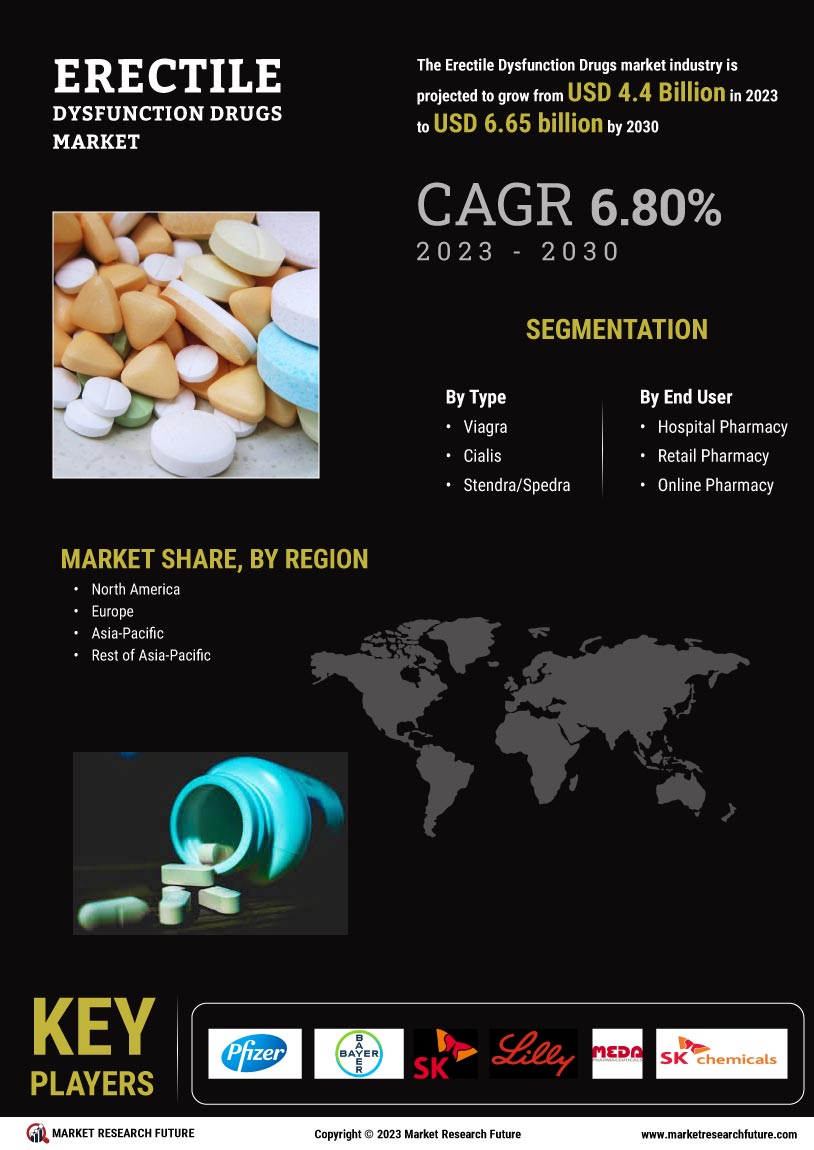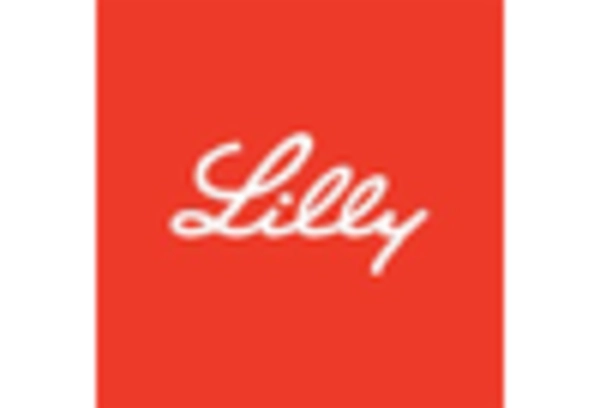The Erectile Dysfunction Drugs Market is characterized by a dynamic competitive landscape, driven by increasing awareness of sexual health and the growing prevalence of erectile dysfunction (ED) among men globally. Key players such as Pfizer (US), Eli Lilly (US), and Bayer (DE) are at the forefront, leveraging their extensive research capabilities and established brand recognition to maintain market leadership. These companies are focusing on innovation, with a particular emphasis on developing new formulations and delivery methods to enhance patient compliance and satisfaction. Additionally, strategic partnerships and collaborations are becoming increasingly common, as firms seek to expand their market reach and enhance their product offerings.
In terms of business tactics, companies are increasingly localizing manufacturing to reduce costs and improve supply chain efficiency. The market structure appears moderately fragmented, with several players competing for market share. However, the influence of major companies remains substantial, as they set industry standards and drive technological advancements. This competitive environment encourages smaller firms to innovate and differentiate their products, thereby fostering a culture of continuous improvement within the sector.
In August 2025, Pfizer (US) announced the launch of a new digital health platform aimed at providing personalized treatment options for ED. This initiative is significant as it not only enhances patient engagement but also positions Pfizer as a leader in integrating technology with traditional pharmaceutical offerings. By utilizing data analytics and telehealth services, Pfizer aims to improve treatment adherence and outcomes, which could potentially reshape patient experiences in the ED market.
Similarly, in July 2025, Eli Lilly (US) expanded its partnership with a leading telemedicine provider to offer remote consultations and prescriptions for its ED medications. This strategic move underscores the growing trend of digital health solutions in the pharmaceutical industry. By facilitating easier access to treatments, Eli Lilly is likely to capture a larger share of the market, particularly among younger demographics who prefer online healthcare services.
In September 2025, Bayer (DE) launched a new campaign focused on raising awareness about the psychological aspects of ED, emphasizing the importance of mental health in sexual wellness. This initiative not only aligns with current trends in holistic health but also positions Bayer as a socially responsible player in the market. By addressing the emotional and psychological factors associated with ED, Bayer is likely to enhance its brand loyalty and customer trust, which are crucial in a market where stigma often hampers open discussions about sexual health.
As of October 2025, the competitive trends in the Erectile Dysfunction Drugs Market are increasingly defined by digitalization, sustainability, and the integration of artificial intelligence in product development and marketing strategies. Strategic alliances are shaping the landscape, allowing companies to pool resources and expertise to innovate more effectively. Looking ahead, it appears that competitive differentiation will evolve from traditional price-based competition to a focus on innovation, technology integration, and supply chain reliability, as companies strive to meet the changing needs of consumers in a rapidly evolving market.


















Leave a Comment